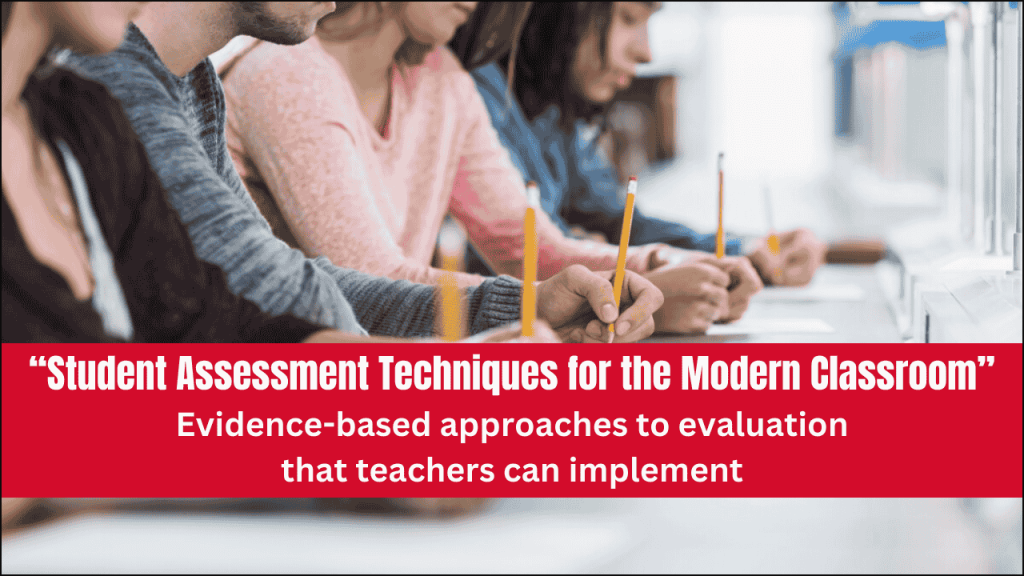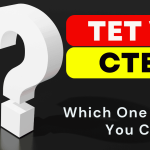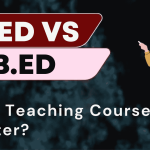
Assessment holds a significant place in the education system. Teachers depend on assessment techniques to check student learning. Teachers identify knowledge gaps and enhance teaching strategies for the better understanding of concepts. Modern classrooms demand updated and research-backed evaluation methods to ensure effective learning. This document discusses various student assessment techniques that educators can adopt.
1. Formative Assessment
Formative assessment provides teachers with insights into student progress throughout the learning process. It enables real-time feedback, allowing students to improve before final evaluations.
Examples of Formative Assessment
| Technique | Description | Benefits |
|---|---|---|
| Exit Tickets | Short questions answered at the end of a lesson | Quickly checks understanding |
| Think-Pair-Share | Students discuss answers before class sharing | Encourages collaboration and discussion |
| Quizzes | Regular short tests | Identifies learning gaps early |
| Concept Maps | Visual diagrams showing relationships between concepts | Enhances conceptual understanding |
| One-Minute Paper | Quick written summaries of lessons | Reinforces key learning points |
2. Summative Assessment
Summative assessment determines if students have met learning objectives at the end of a unit or course.
Examples of Summative Assessment
| Technique | Description | Benefits |
| Final Exams | Comprehensive test covering all topics | Measures overall knowledge |
| Standardized Tests | Uniform assessments for large groups | Enables comparison across students |
| Research Papers | In-depth exploration of topics through writing | Develops research and writing skills |
| Portfolios | Collection of student work over time | Showcases progress and improvement |
| Presentations | Oral or visual explanation of a topic | Builds communication skills |
3. Diagnostic Assessment
Diagnostic assessment helps teachers identify students’ strengths and weaknesses before instruction begins. It enables educators to tailor lessons according to student needs.
Examples of Diagnostic Assessment
| Technique | Description | Benefits |
| Pre-Tests | Assessments before new lessons | Identifies prior knowledge |
| Surveys | Questions about student background and interests | Personalizes learning experience |
| Interviews | One-on-one discussions with students | Helps understand learning styles |
| Skills Checklist | List of skills students should master | Tracks individual progress |
| Writing Samples | Short essays or written responses | Evaluates language and writing ability |
4. Performance-Based Assessment
Performance-based assessment requires students to demonstrate knowledge through hands-on tasks or projects.
Examples of Performance-Based Assessment
| Technique | Description | Benefits |
| Group Projects | Collaborative tasks among students | Enhances teamwork and critical thinking |
| Experiments | Hands-on activities, particularly in science | Encourages practical application |
| Role-Playing | Acting out real-life scenarios | Improves engagement and understanding |
| Case Studies | Analyzing real-world situations | Develops problem-solving skills |
| Debates | Structured arguments on specific topics | Encourages logical thinking |
5. Peer and Self-Assessment
Peer and self-assessment methods encourage students to evaluate their work and that of their classmates, fostering responsibility and self-reflection.
Examples of Peer and Self-Assessment
| Technique | Description | Benefits |
| Rubrics | Clear grading criteria | Ensures fair evaluation |
| Reflection Journals | Personal insights on learning experiences | Encourages self-awareness |
| Peer Feedback | Reviewing and critiquing classmates’ work | Develops critical thinking |
| Self-Scoring | Students grade their assignments | Promotes honesty and accountability |
| Learning Logs | Records of progress and challenges | Helps track growth |
6. Technology-Based Assessment
Technology has transformed assessment techniques, making evaluations more interactive and efficient.
Examples of Technology-Based Assessment
| Technique | Description | Benefits |
| Online Quizzes | Digital quizzes with instant feedback | Saves time and provides quick results |
| Learning Management Systems (LMS) | Platforms like Google Classroom and Moodle | Organizes assignments and assessments |
| E-Portfolios | Digital collection of student work | Tracks progress over time |
| Gamification | Using games to enhance learning | Increases motivation and engagement |
| AI-Based Feedback | Automated feedback on writing | Provides immediate and personalized suggestions |
7. Differentiated Assessment
Differentiated assessment caters to diverse learning styles, allowing students to demonstrate knowledge in various ways.
Examples of Differentiated Assessment
| Technique | Description | Benefits |
| Choice Boards | Multiple options for assessment | Increases student engagement |
| Tiered Assignments | Tasks with different difficulty levels | Supports individual learning needs |
| Oral Assessments | Verbal responses instead of written ones | Helps students with writing difficulties |
| Project-Based Learning | Real-world problem-solving tasks | Encourages creativity and innovation |
| Adaptive Testing | Adjusts questions based on student responses | Provides a personalized experience |
The Way Forward
Modern classrooms require diverse and flexible assessment techniques. Teachers must choose formative, summative, diagnostic, performance-based, peer, self, technology-based, and differentiated assessments. These assessment techniques are used to evaluate student learning effectively. Each assessment method has its advantages and disadvantages. Teachers can also use a combination of two or more techniques.









